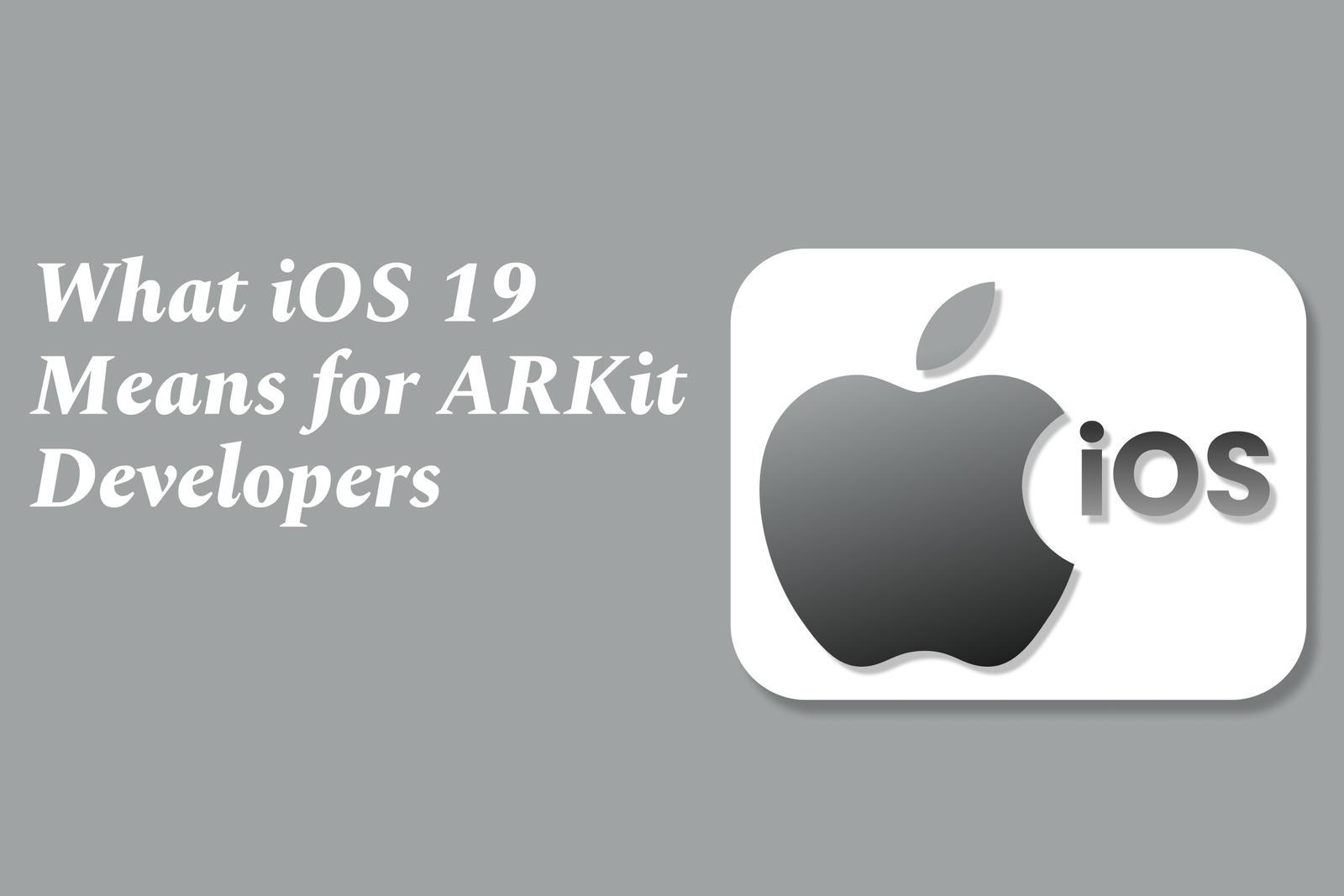What iOS 19 Means for ARKit Developers
iOS 19 brings powerful upgrades to ARKit, enhancing scene understanding, multiuser support, object tracking, and persistence. These improvements enable developers to create more immersive, accurate, and seamless AR experiences across Apple devices with better performance and privacy.
What iOS 19 Means for ARKit Developers
1 ) Enhanced ARKit Capabilities in iOS 19
With the release of iOS 19, Apple introduces significant upgrades to ARKit that empower developers to build more immersive and precise augmented reality experiences. These improvements include advanced scene understanding, enhanced motion tracking, and improved environmental recognition, which will allow AR apps to interact more naturally with the physical world.
2 ) Improved Persistent AR Experiences
iOS 19 offers better support for persistent AR, enabling apps to save and restore AR scenes more reliably across sessions and device switches. This long awaited feature addresses previous limitations where developers struggled to maintain consistent AR experiences after app restarts or device changes.
3 ) Expanded Support for Multiuser AR
The update enhances multiuser AR functionalities, allowing multiple devices to share AR experiences seamlessly with refined synchronization and spatial mapping. This paves the way for collaborative applications and shared AR content with minimal latency and higher accuracy.
4 ) New APIs for Advanced Object Recognition and Tracking
Apple introduces new APIs that offer improved object detection and tracking, including support for a broader range of real world objects and environments. Developers can now leverage machine learning models integrated deeper into ARKit to create unique interactive elements anchored precisely in real space.
5 ) Deeper Integration with VisionOS and Apple’s Ecosystem
With iOS 19, ARKit is more tightly integrated with the upcoming VisionOS and other Apple ecosystem tools, promoting cross device AR experiences. This allows developers to create flexible applications that operate seamlessly across iPhones, iPads, and future Apple AR hardware.
6 ) Performance Optimizations and Developer Tools
Apple enhances ARKit’s performance in iOS 19, ensuring smoother frame rates and lower latency for AR applications. Additionally, updated developer tools and debugging features are introduced to help streamline the development process and improve app stability.
7 ) Better Accessibility and UX Enhancements
The iOS 19 update emphasizes accessibility by introducing new user interface components tailored for AR, which help make AR applications more usable and intuitive for a broader audience, including those with disabilities.
8 ) Privacy Focused Features for AR Data
Given the sensitivity of AR data, iOS 19 incorporates new privacy protections and transparency features that give users more control over how their environment data is accessed and used by AR apps.
In summary, iOS 19 represents a substantial step forward for ARKit developers by improving persistence, multiuser capabilities, object recognition, performance, and ecosystem integration—offering more powerful tools to build innovative augmented reality experiences.
https://justacademy.in/news-detail/react-native-expo?s-new-features-you-didn?t-know-about
https://justacademy.in/news-detail/android-automotive-os-latest-developments
https://justacademy.in/news-detail/how-ios-19-supports-ultra-wideband-technology
https://justacademy.in/news-detail/flutter-for-logistics-and-delivery-apps
https://justacademy.in/news-detail/react-native-now-powers-desktop-apps
Related Posts
In 2025, top Angular libraries offer modern, feature-rich components and tools for building dynamic web apps. From powerful data grids to low-code platforms like UI Bakery, these libraries enhance development speed, UI design, and scalability, making them essential for Angular developers.
Migrating from AngularJS to Angular 17 involves gradually upgrading your app by running both frameworks together using tools like ngUpgrade, rewriting components in TypeScript, and adopting Angular’s modern architecture to enhance performance, maintainability, and long-term support.
Angular state management tools help organize and handle app data efficiently, improving scalability and maintainability. Popular options include NgRx for robust, RxJS-based patterns, and newer Signal Store solutions that offer simpler, reactive approaches integrated tightly with Angular’s latest features.
RxJS in Angular empowers developers to manage asynchronous data streams with powerful operators like `forkJoin`, `combineLatest`, and `zip`. Mastering these key operators in 2025 is essential for building efficient, reactive applications that handle complex event sequences seamlessly.
Angular performance optimization in 2025 focuses on improving app speed and responsiveness by using techniques like OnPush change detection, lazy loading, efficient data caching, and AOT compilation. These practices reduce load times, enhance user experience, and ensure scalable, fast Angular applications.
In 2025, Angular remains preferred for large-scale, enterprise apps with its robust, all-in-one framework, while Vue attracts developers seeking simplicity and fast development for smaller projects. Both frameworks excel, with choice driven by project needs and team expertise.
Angular Signals are a new reactive primitive in Angular 16 that enable fine-grained, efficient change detection by automatically tracking dependencies and updating only affected parts of the UI. They simplify state management and boost app performance, revolutionizing Angular's reactivity model.
Angular interview questions to prepare in 2025 focus on core concepts like components, directives, data binding, routing, and dependency injection, along with TypeScript mastery and latest Angular features to ensure strong practical knowledge for building scalable, efficient web applications.
AngularJS reached its official end of support in January 2022, meaning no further updates or security patches. To ensure app security and performance, developers should consider migrating to modern Angular versions or seek third-party long-term support options if immediate migration isn’t possible.
The Angular Roadmap 2025 highlights upcoming features focused on improving developer experience and performance, including zoneless Angular, Signals integration, enhanced Forms, async data handling, improved HMR, and expanded Angular Material/CDK enhancements, driving modern, efficient web app development.










